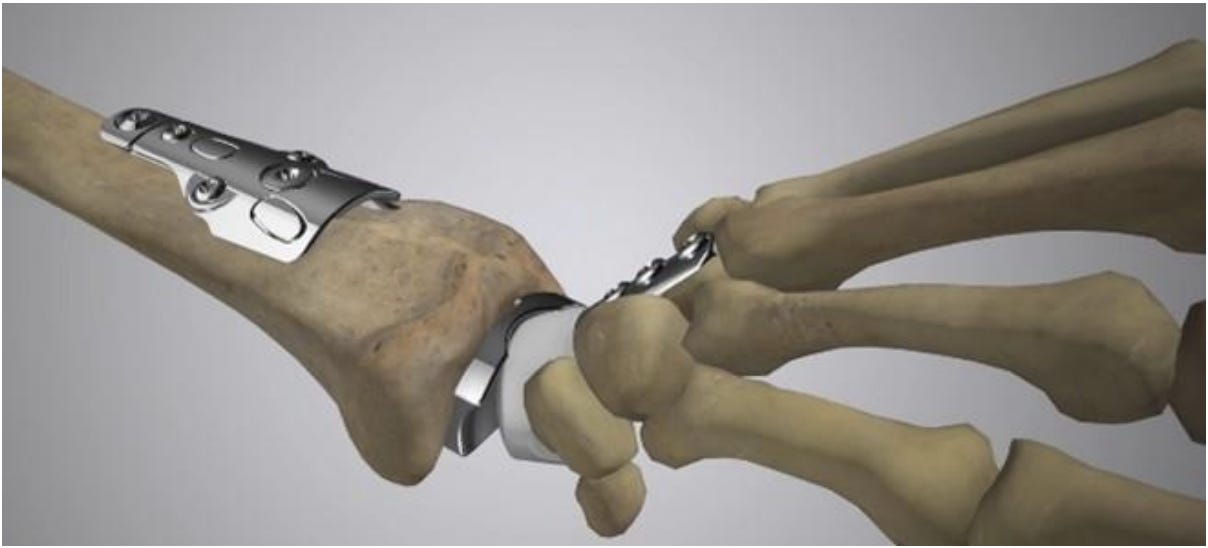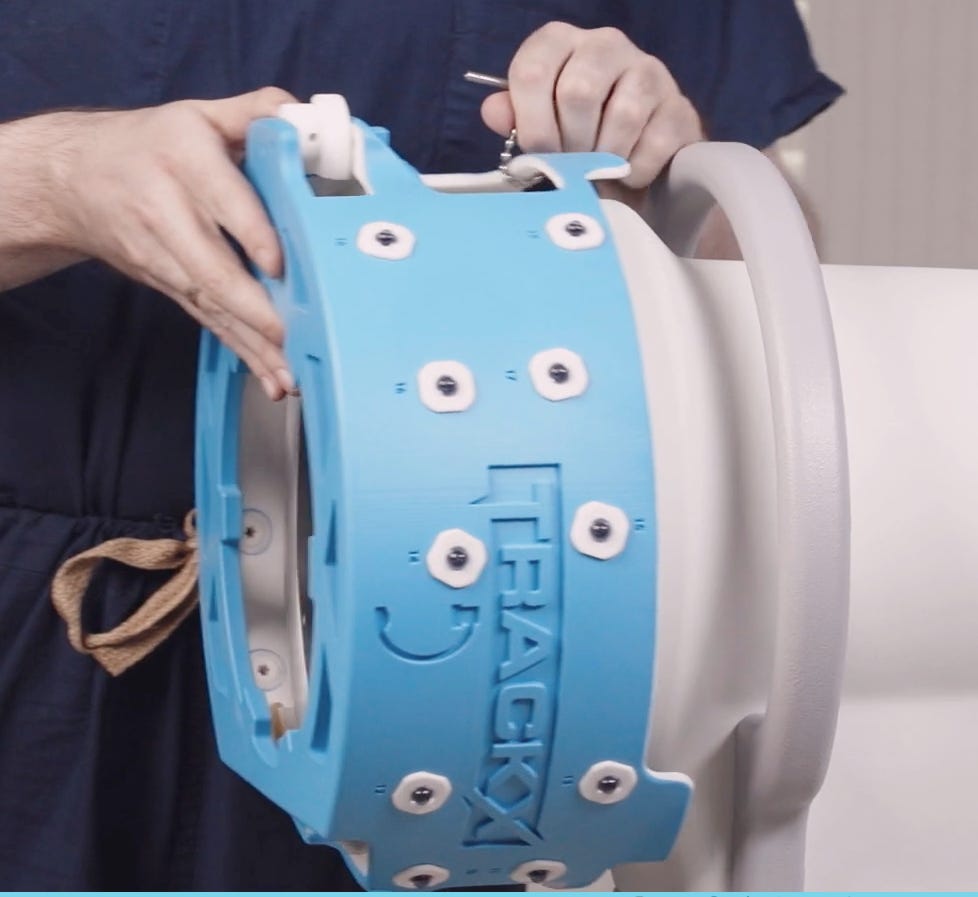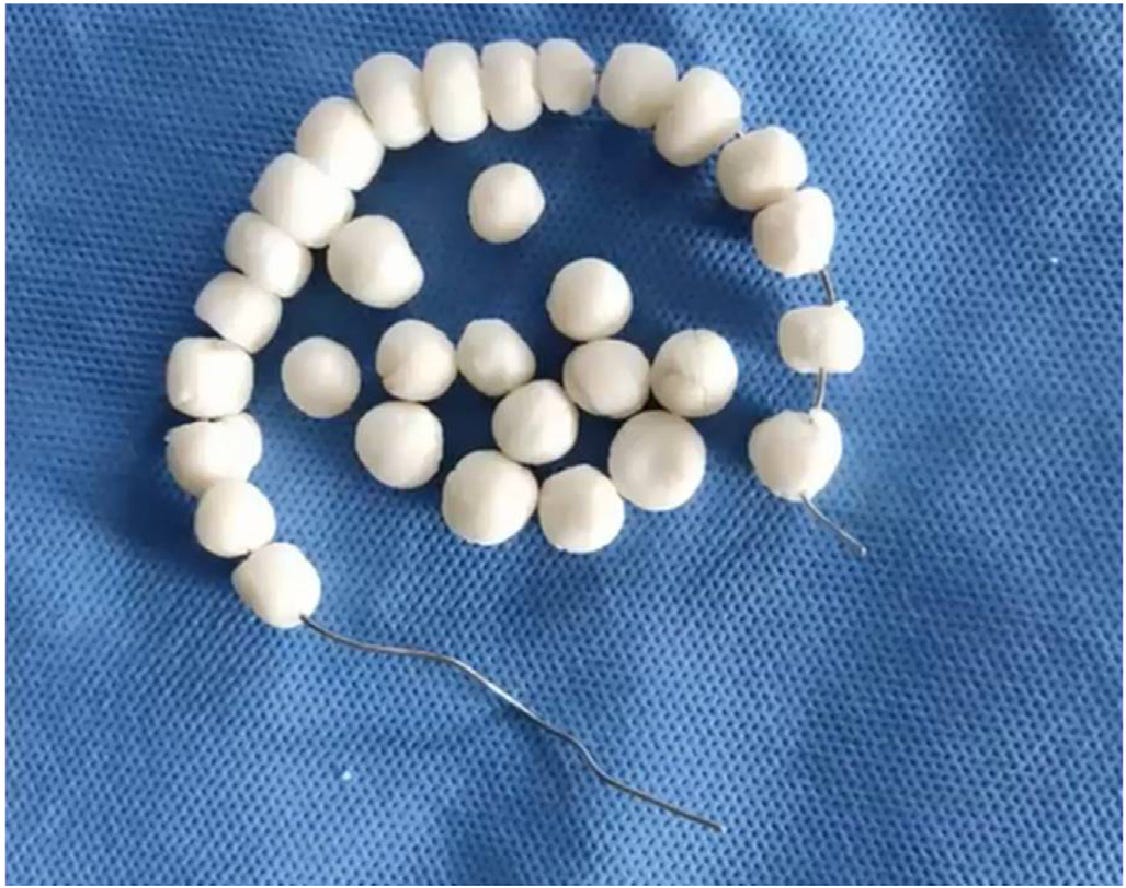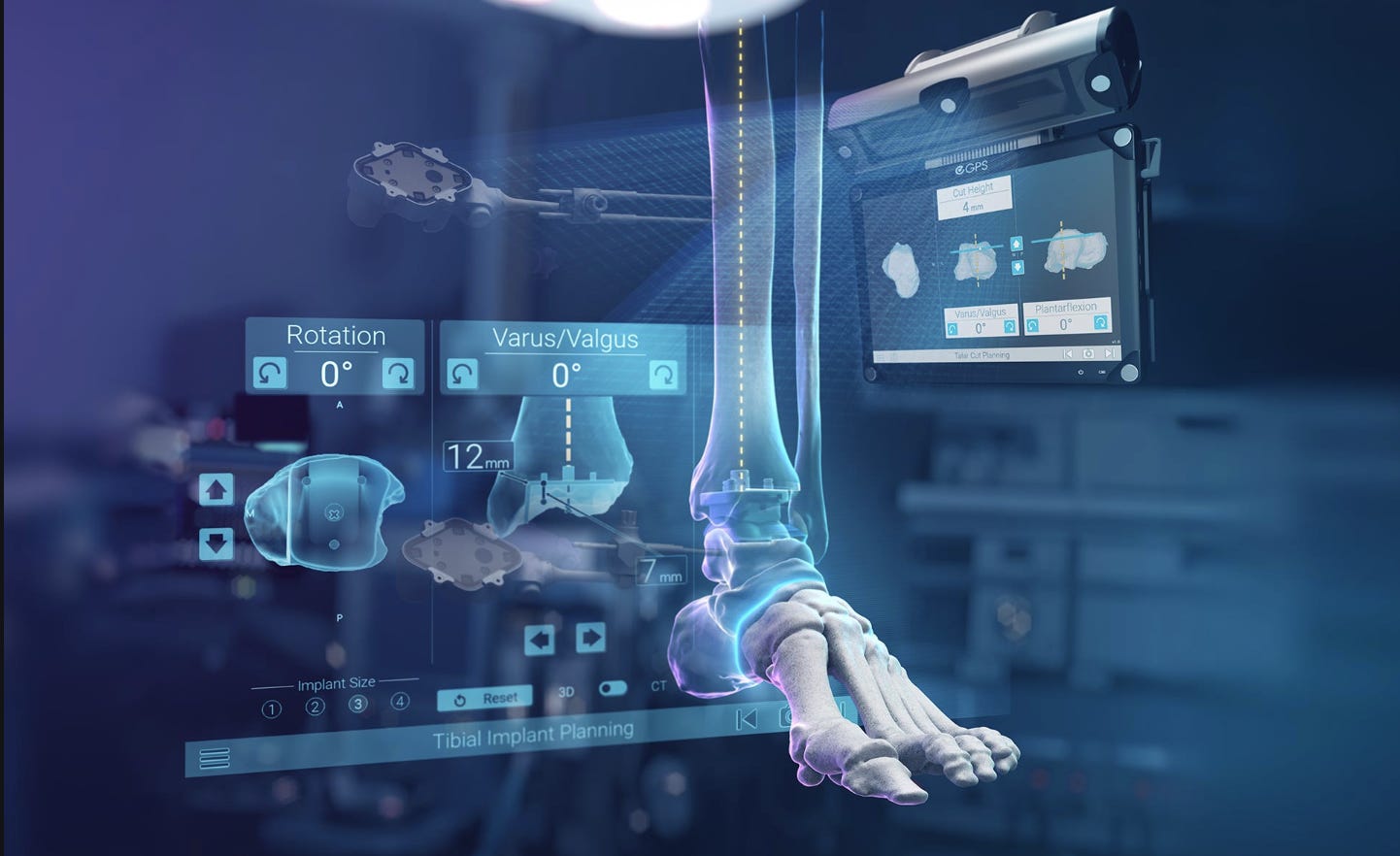Have a Career Conquering Cancer!
Explore this exclusive issue on Orthopaedic Oncology.
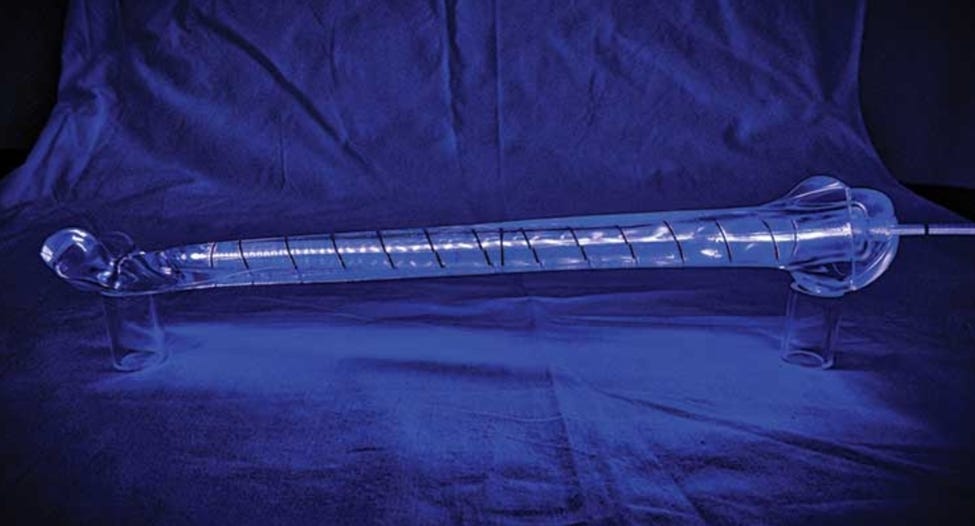
Can we get a Watt Watt?! - #NeoArmory:

What do you get when you mix a bit of problem-at-hand, interest-in-photons, out-of-the-box-thinking, a buddy from IR, and of course lytic bone lesion? You give the world – the “IlluminOss”

The IlluminOss system has its proprietary Balloon catheter made of Dacron-like material, which is inserted into the medullary canal and filled with its light-sensitive Monomer. This is cured with light (436nm), which makes the construct rigid and provides longitudinal and some rotational stability. Additional fixation can be done on top of this if needed.
We know what you’re thinking. Looks good, does it work? Yes, it does. LightFix trial concluded, saying it reduced pain and improved function in the first year. It can be used alone in impending fractures, but it is recommended to add fixation in pathological fractures.

FDA approved for almost all long bones; this has been a perfect NeoArmory storage on the shelves in some parts of the world. Yet to be widely available, but most of us have been in the dark until the light shines! Haha
Out-of-the-box awesomeness: Van Nes – Borggreve knee rotationplasty #FromTheHistory:
Can you imagine a person whose leg was amputated, and his ankle and foot were attached to the stump, in the wrong way, feet pointing backwards, 180° to what we usually have—— jumping over six feet high? That sounds like some out-of-this-world story, right? But, no, this is how the life-changing surgery called rotationplasty could work!
It all started with Joseph Borggreve, a German surgeon who thought out of the box and did an amputation above the knee for a 12-year-old kid with tuberculosis and thought it would help him if the healthy ankle and foot could be fixed to the stump, providing what is essentially a knee joint. It was Cornelis Pietr Van Nes, a Dutch surgeon, who popularised the procedure where he gave hope to a lot of children with congenital deformities of the lower limb.
Over time, this surgery was incorporated in treating children with lower thigh tumours where above knee amputation was the only choice and voila, it gave excellent results. Samuel Grewe has become a poster boy for the rotationplasty for malignant tumours in recent times. He underwent rotationplasty at the age of 13 in 2011 and instead of going through despair, he decided to jump into action, quite literally. He started high jumping in 2014 and didn’t stop. He went on to earn two medals in the Paralympics. First, a silver in Rio, 2016 followed by a Gold for a jump which was 1.86m high in Tokyo, in 2020.
When life gives you a tumour, just make a turn-around and jump high!

The ‘Living Sleeve’ Technique for Pediatric Humerus Reconstruction” - #SurgicalPearl:
In the world of upper-limb oncology surgery, this one’s a game-changer—especially for growing kids. When large segments of the humerus are resected for tumours like osteosarcoma, traditional megaprostheses can be too bulky, too rigid, and too dead (literally—they don’t grow or heal). Enter the “Living Sleeve” technique, a clever hybrid of modern 3D printing and good ol’ biology.
What’s the idea?
A custom-made, 3D-printed hollow titanium prosthesis is designed to replace the lost humerus segment. But it’s not just any implant—it’s porous, lightweight, and hollow for a reason. Surgeons pack the hollow core with autologous bone graft, harvested from the remaining proximal humerus or iliac crest. This converts the prosthesis into a scaffold that facilitates genuine biological integration.
Surgical Steps:
-
Wide tumour resection, preserving joints when possible.
-
CT-based design and printing of a porous titanium hollow sleeve with flanged ends.
-
Grafting: Cancellous bone is packed into the hollow interior.
-
Internal fixation: The prosthesis is secured to the host bone with locking screws through side flanges.
-
Layered closure and standard post-op rehab.
Merits:
-
The porous structure allows bone ingrowth.
-
Hollow design = less weight and more biology.
-
Custom-fit improves stability and cosmetic results.
-
Ideal for young, growing patients where motion and long-term integration matter.

3D-Printed Pelvic Reconstruction: Sculpting Precision, Stressing Function - #MostCited:
Hu et al. delivered compelling data comparing 3D-printed versus modular hemipelvic prostheses for pelvic reconstruction post-tumour resection. In their retrospective cohort, 3D-printed implants demonstrated more natural biomechanical stress patterns, improved osteointegration, and higher functional scores. Finite element modelling revealed that these implants better mimic native pelvic biomechanics, while modular devices showed stress hotspots linked to mechanical failure and screw loosening.
Clinically, the modular group faced more complications—loosening, infection, poor integration—whereas 3D-printed counterparts, though demanding longer operative time and more blood loss, provided durable reconstructions with precise anatomic fit. The study underscores a paradigm shift: from adaptable modularity to personalised precision. For the reconstructive surgeon, it's a nudge to rethink “fit-for-all” and embrace the pelvic ring’s biomechanics as a blueprint—not a boundary.

Longer Isn’t Always Better - Antibiotics After Tumor Surgery #InTrials:
A multi-centre RCT by Ghert et al. compared short (24-hour) versus extended (5-day) intravenous antibiotic regimens after endoprosthetic reconstruction for lower extremity bone tumours. Conducted across 36 sites and involving 604 patients, the study aimed to reduce deep postoperative infections—a major complication after limb salvage surgery. Surprisingly, the longer antibiotic course did not lower infection rates. The 5-day group had a slightly higher (though not statistically significant) infection rate: 16.7% vs. 10.9% in the 24-hour group. Adverse events, such as antibiotic-related side effects, were also more frequent with prolonged use. The study’s findings challenge the assumption that “more is better” when it comes to post-op antibiotics in oncologic limb reconstructions. The results support using a single-day prophylactic antibiotic protocol, which is equally effective and comes with fewer risks—streamlining care while maintaining safety in a high-risk surgical population.

Events to check out:
-
AO Spine Asia Pacific Regional Conference 2025 18 – 21 September 2025 Bangkok, Thailand
-
18th ICRS World Congress Joint Revolution 11 – 14th Oct 2025 - Boston, USA
-
AANA 2026 14 – 16th May 2026 - Phoenix, USA
Answer for the last month’s question:
Which of the following statements best reflects the evidence regarding the management of elderly patients with femoral neck fractures on clopidogrel?
A) Surgery should be delayed for at least 5 days after stopping clopidogrel to reduce bleeding risk.
B) Early surgery on patients taking clopidogrel significantly increases the need for blood transfusion.
C) Early surgery on patients taking clopidogrel is safe and does not significantly increase bleeding risk.
D) Clopidogrel should always be withheld in the perioperative period to avoid complications.
Answer: C) Early surgery on patients taking clopidogrel is safe and does not significantly increase bleeding risk according to a systematic review and meta-analysis by Soo et al.
Question of the month:
Which bone sarcoma subtype had the highest pooled 5‑year overall survival rate per the review?
A. Chondrosarcoma
B. Ewing’s sarcoma
C. Osteosarcoma
D. Metastasis
Hold your curiosity till our next issue. Have a wonderful month ahead, folks.









